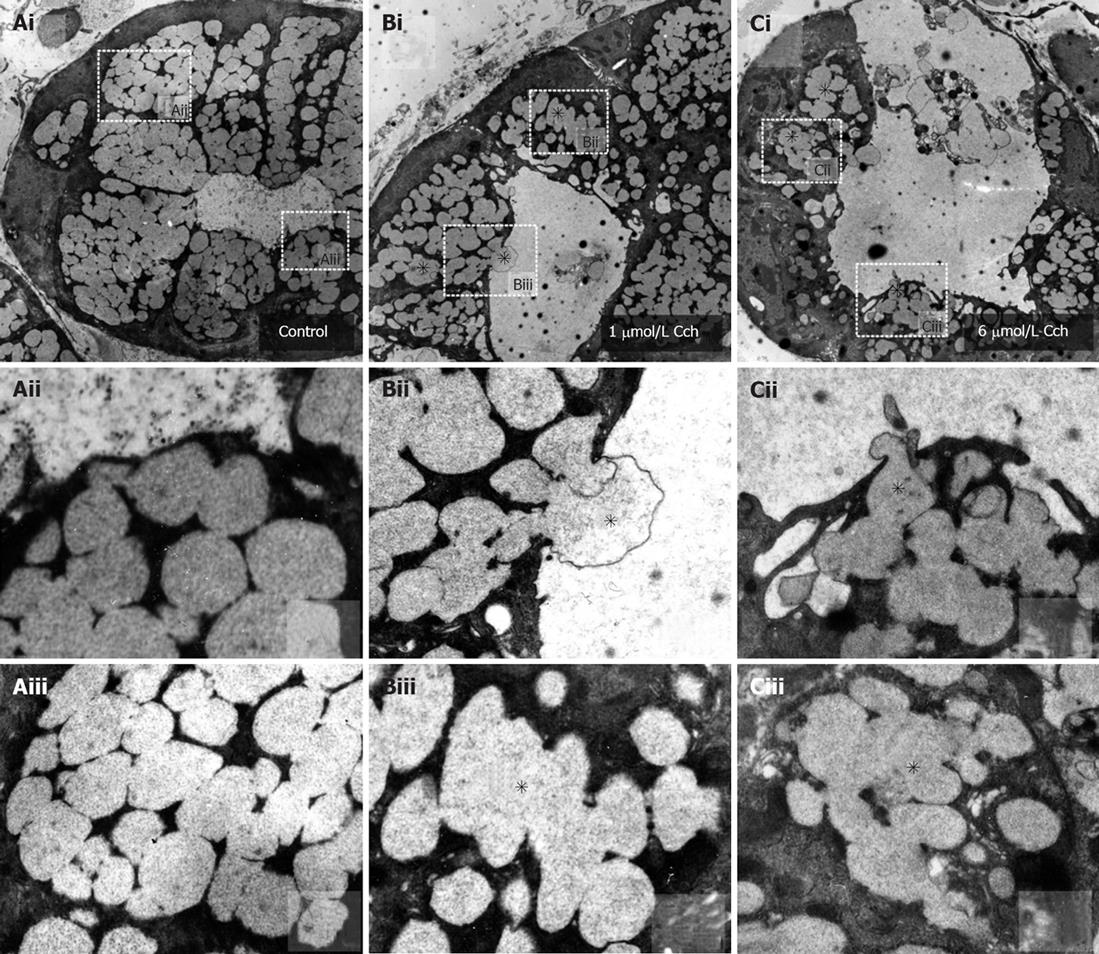Copyright
©2008 The WJG Press and Baishideng.
World J Gastroenterol. Apr 21, 2008; 14(15): 2314-2322
Published online Apr 21, 2008. doi: 10.3748/wjg.14.2314
Published online Apr 21, 2008. doi: 10.3748/wjg.14.2314
Figure 2 Carbachol-evoked mucin granule exocytosis into Brunner’s gland acinar lumens.
Representative transmission electron micrographs of Brunner’s glands in unstimulated control (A), 1 &mgr;mol/L (B) and 6 &mgr;mol/L carbachol (C) stimulated tissue. A: Unstimulated Brunner’s acinus (× 6250). Aii and Aiii are blowups of indicated regions in Ai, showing small separate vesicles; B: One &mgr;mol/L carbachol-stimulated Brunner’s acinus showing a larger apical lumen with reduced number of electron-lucent mucin vesicles within the apical poles, with some vesicles undergoing vesicle-vesicle fusions (indicated by asterisk, × 6250). Bii and Biii are blowups of indicated regions in Bi, showing compound exocytosis and vesicle-vesicle fusion (indicated by asterisks), respectively; C: Six &mgr;mol/L carbachol stimulated Brunner’s acinus. There is much less remaining vesicles some of which are undergoing vesicle-vesicle fusion (indicated by asterisk, × 5000). Cii and Ciii are blowups of indicated regions in Ci, showing compound exocytosis and vesicle-vesicle fusion (indicated by asterisks), respectively.
- Citation: Cosen-Binker LI, Morris GP, Vanner S, Gaisano HY. Munc18/SNARE proteins’ regulation of exocytosis in guinea pig duodenal Brunner’s gland acini. World J Gastroenterol 2008; 14(15): 2314-2322
- URL: https://www.wjgnet.com/1007-9327/full/v14/i15/2314.htm
- DOI: https://dx.doi.org/10.3748/wjg.14.2314









